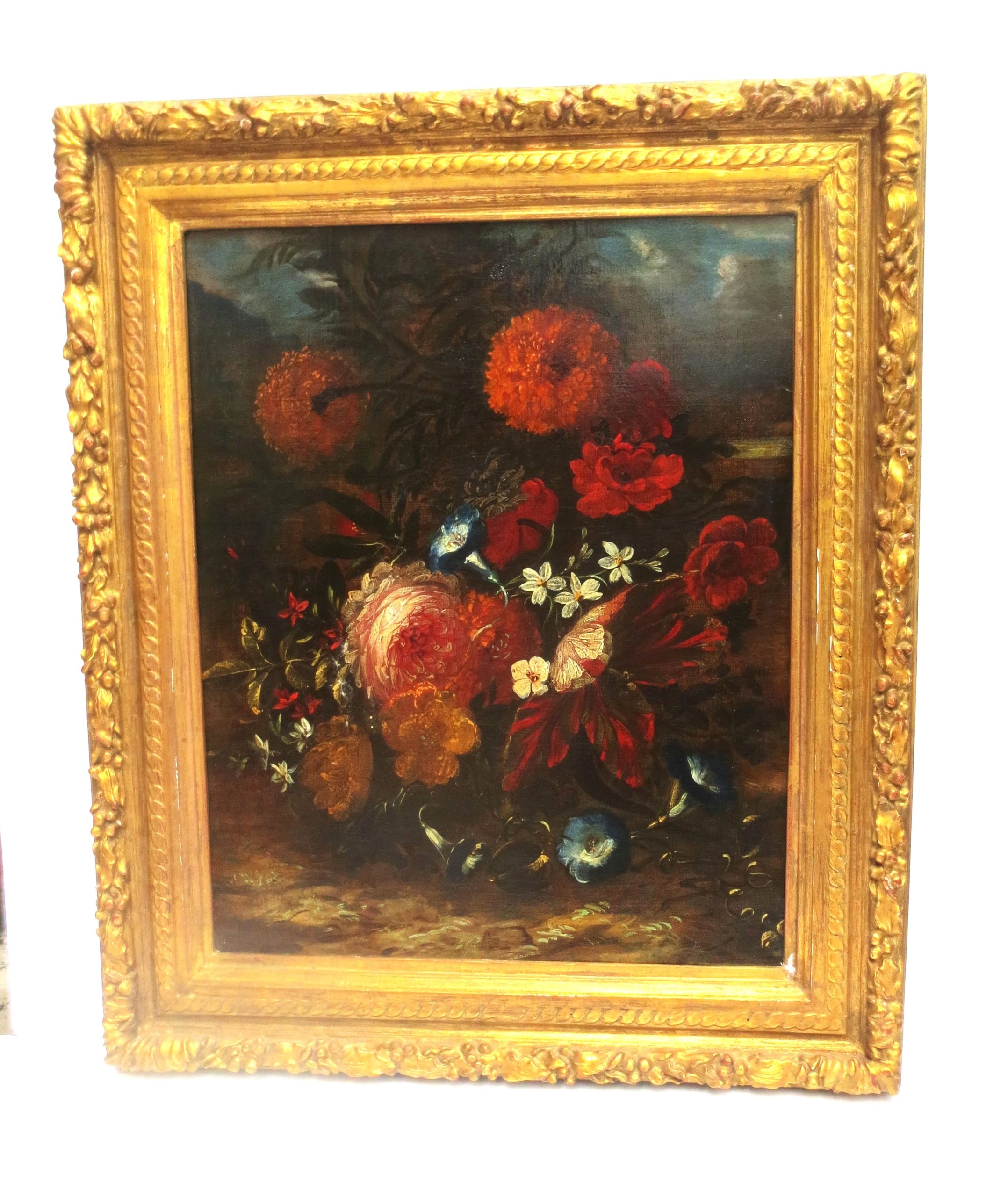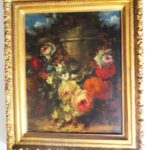Both show gathered selection of similar flowers, one before an earthenware urn and both on natural earthen ledge before glimpses of sky. Their dominant flowers include varieties of chrysanthemums and roses, peonies and poppies In an outdoor setting consistent with a growing appreciation of natural situations as opposed to formalized and artificial presentations. Withal this regard for the simple and natural, there is clear sense of artistic order in the patterns formed by ascending, descending and spiraling groupings that created internal dramas of contrasting values and colors ranging from deep red, dark grey and consuming background umbra broken by luminous pinks and bright firefly sparkles of small whitepetals and trailing slender vines independent the weightier commands of gravity. These dramatic patterns of contrasting chiaroscuro and colors as rendered with assertive impasto strokes are a key to the qualities seen in the rare floral still lives of Domenico Bettini.
There are two strains of long lived ancient connotations carried by these and a few rarer blossoms in each gathering, one as messengers of love and marriage, the other harbingers of mourning as the sadder side of love. Local specialists throughout Europe painted less formal, but strikingly colored wild bouquets for sale directly to households as pleasant decoration, memorials of love and the fragrant dissolution of sorrow. As paintings done in either of two quite cosmopolitan Italian cities, these still lives conveyed recognizable references to antique botany, mythology, and corporeal well being.
The carnation (Ital: garofano) was already called a “flower of god” in ancient Greece, and hence becomes the flower of the Virgin Mary as in the Rosary, and of true love and even the transformation of Christ; its meanings and appearances in poetry, painting and courtship are legion. The chrysanthemum (crisantemo) was already known to Ovid who explained its origin as the bloom born of Clythie who died of unrequited love; others attributed magic powers and an omen of wealth and power. The peony (peonia), known as the flower of Apollo for curative powers was already cited by Homer and praised by Pliny as a medicinal. With four or five white petals, the primrose (Ital.: primula) is associated with spring as an early blooming plant, and with the Incarnation of Christ in Medieval litanies to the Virgin. It was also credited with curative powers as St. Paul’s herb, particularly utile in healing the paralysis. The extensive richness of credulous, learned and celebratory lore conveyed by flowers makes these still lives emblematic narratives, icons and omens bringing the potency of color and fragrance to the happiness of life and kind memories of love.
References: For Bettini cf. Donatella Biagi Maino, “La natura morta a Bologna Occidentale,“pp. 384 – 437, in Federico Zeri et alia, La natura morta in Italia, 2 vols., Milan, 1989, vol. 1, pp.426 – 429 for Bettini. Little could surpass the encyclopedic omnium gatherum of Italian Medieval and Renaissance plant information and lore as gathered from primary sources, early illustrations and natural science and codified by Mirella Levi D’Ancona, The Garden of the Renaissance: Botanical Symbolism in Italian Painting, Florence, 1977, s.v.


